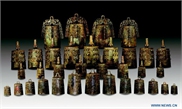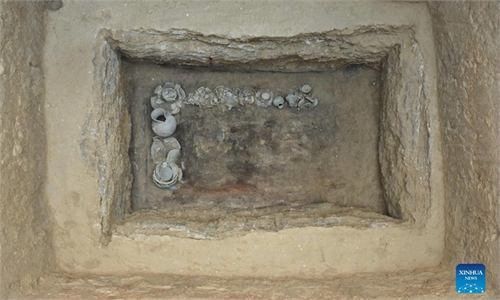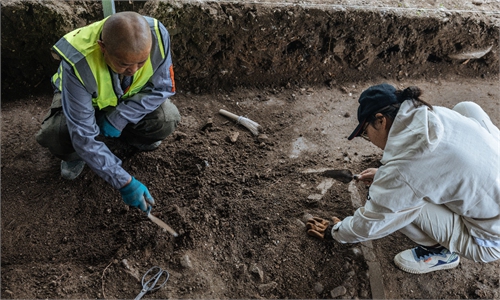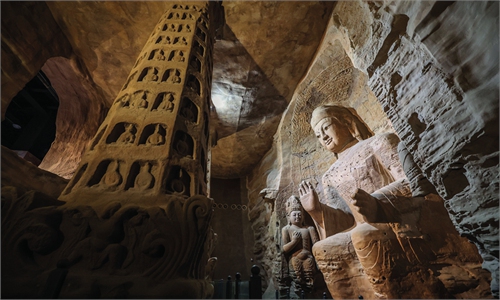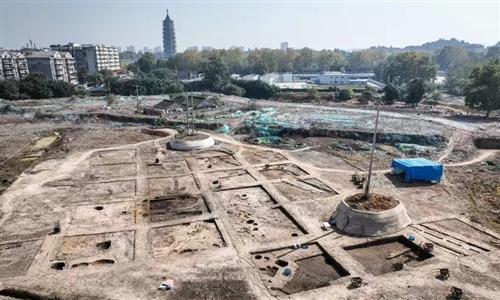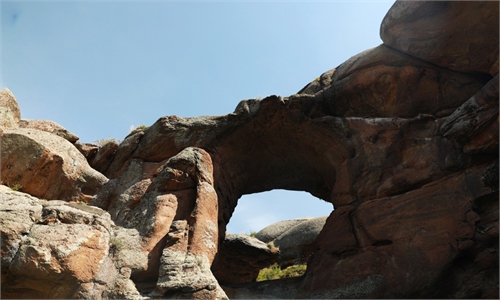ARTS / CULTURE & LEISURE
Battlefield site from 1,500 years ago discovered in North China
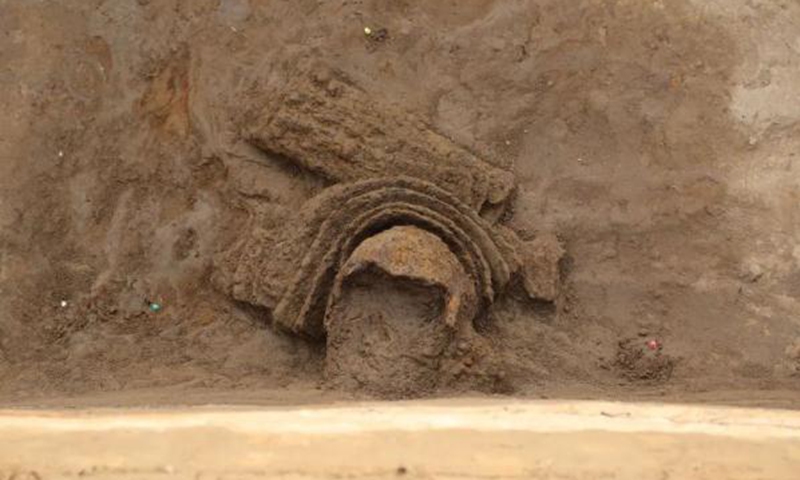
An iron helmet unearthed from the Yecheng ruis Photo: Courtesy of the Yecheng ruins archaeological team
Remnants of an ancient battlefield dating back to the Southern and Northern Dynasties (386-589) have been discovered at the Yecheng ruins in North China's Hebei Province, according to a report by the Xinhua News Agency.
Located in the city of Handan, the site comprises two interconnected ancient city ruins. It was once the capital of several ancient dynasties during the Southern and Northern Dynasties. Many ancient military artifacts, including armor and weapons, were unearthed during the excavation of the former moat outside the Zhuming Gate.
These armor and weapons have provided crucial physical evidence to enrich the fields of weapon archaeology and iron research, said Shen Lihua, an associate researcher at the Institute of Archaeology, Chinese Academy of Social Sciences (CASS), and the head of the archaeological team.
Among the notable findings are the remains of a bridge, marked by a brick-built, load-bearing wall and evenly spaced pillar holes. However, further archaeological work is needed to confirm the specific shape of the bridge.
According to Shen, the moat runs roughly parallel to the city wall. At the central axis of the gate, the water channel of the moat is slightly narrower, and the riverbank steeper. A large amount of armor, bricks, tiles and ceramic fragments were unearthed from the sediment in the ancient moat.
"This excavation has provided a preliminary understanding of the layout and structure of the moat and bridge while providing new materials for researching ceremonies and warfare," Shen noted.
The archaeological team, composed of members from the CASS and the Hebei provincial institute of cultural relics and archaeology, have conducted trial excavations on the moat from March to June 2023, according to the report.
